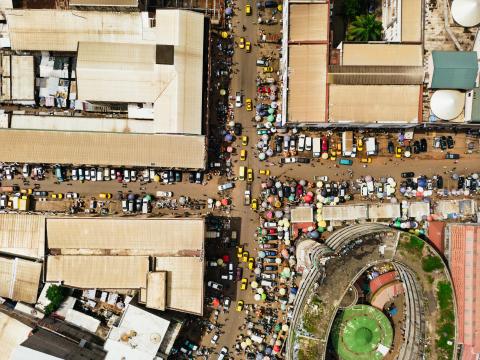The state of food security and nutrition in the world 2023
This is a summary of the following report: FAO, IFAD, UNICEF, WFP and WHO (2023) The State of Food Security and Nutrition in the World 2023. Urbanization, agrifood systems transformation and healthy diets across the rural–urban continuum. Rome, FAO. https://doi.org/10.4060/cc3017en
This densely packed, 316-page report provides a comprehensive breakdown of the food security landscape and subsequent nutrition indicators both globally and by region. We encourage readers to download and view elements of the report that are specific to their own work. A detailed summary of the findings is beyond the scope of this article; instead, the key messages are outlined (Box 1).
A central theme of the 2023 report is urbanisation. The report highlights the urban-rural divide that exists across stunting, wasting, and overweight globally1 - with stunting and wasting disproportionately affecting rural populations and overweight impacting urban communities. This is true for all regions, although the effect is less pronounced for wasting in Latin America and the Caribbean, where the urban-rural divide is present but not significant.
By 2050, 70% of the global population are projected to reside in cities. Food systems require reorientation to cater to these new challenges and leverage opportunities to eradicate hunger, food insecurity, and malnutrition.
"As urbanisation increases, rural and urban areas are becoming more intertwined, and the spatial distinction between them is becoming more fluid."
Another key theme is the context in which this report arrives - with global food security facing the stressors of the COVID-19 pandemic, including its subsequent economic fallout, and the war in Ukraine, with its trickle-down effects on food and energy affordability. These stressors exacerbate existing conflict, climate extremes, economic slowdowns and downturns, and growing inequality. These factors have all been highlighted in previous reports but are set to continue and, in some cases, intensify.
Estimates indicate that hunger is no longer on the rise but is still far above pre-COVID-19 pandemic levels and far off track to achieve Sustainable Development Goal 2 (Zero Hunger).
Box 1: Key findingsGlobal hunger levels stalled between 2021 and 2022, yet many places in the world face deepening food crises. Access to nutritious, safe, and sufficient food remains an issue for roughly 2.4 billion individuals, particularly women and rural residents. Child malnutrition remains high around the world - 22.3% of children are stunted, 6.8% are wasted, and 5.6% are overweight. Urbanisation is accelerating and driving increased consumption of processed and convenience foods, leading to a spike in overweight and obesity rates. Rural dependence on global markets is another concern, as previously self-sustaining rural regions are now increasingly reliant on broader markets for access to nutrients. |
1 Global data are only provided for Africa, Asia, and Latin America and the Caribbean for these high-level indicators, with Europe, Oceania, and Northern America omitted. Read a more detailed breakdown of these trends.


